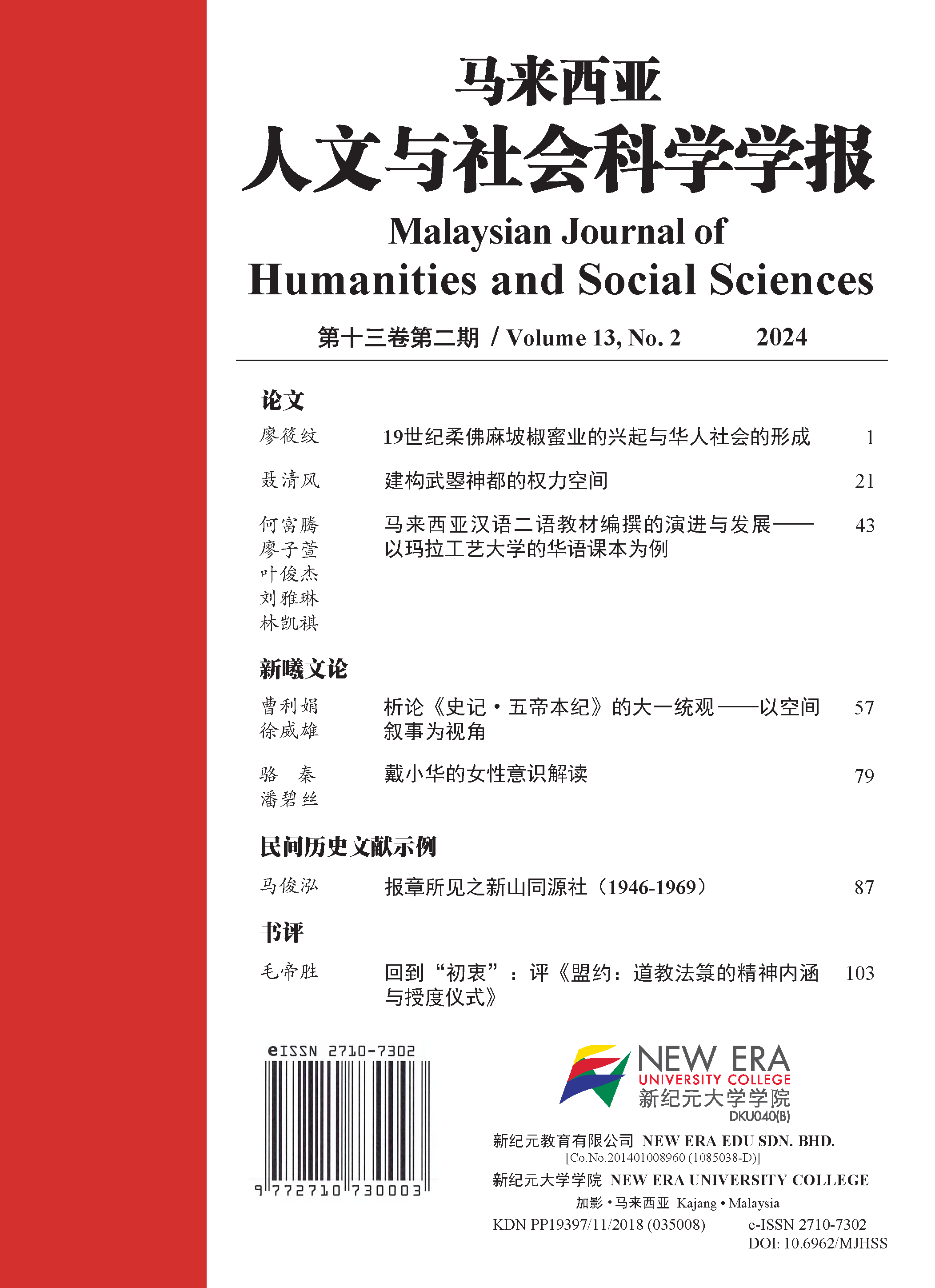析论《史记·五帝本纪》的大一统观一 以空问叙事为视角 Grand Unity in "Biographic Sketches of Five Emperors" Excerpted from Records of the Grand Historian of China: A Perspective of the Spatial Narrative
Keywords:
五帝本纪、大一统、空间、叙事,Abstract
中国传统叙事具有鲜明的空间特性。上述轩辕、下迄太初的著名史书-—《史记》在多篇传记中从空间维度彰显了历史悠久、亘古不息的“大一统”观。《五帝本纪》作为正史之开篇,从地理空间、社会空间、政治空间三个方面暗蕴着肇始千五帝时期的浓厚的大一统思想。地理疆域大一统体现在五帝时期大体以“南—北—西—东”为位移路线,先后形成四个相应不同的活动中心,并向四界辐射,最终确立为“九州—四海”的内外空间概念。社会空间大一统体现为“聚”、“邑”、“都”各级部落的产生,其原因或是政治权力集中运作的客观需要,或是德化归附、社会生产实践的主动诉求。政治空间大一统体现在早期部落“夷”、“夏“民族身份的动态建构, “夏“居中、德为优,而“夷蛮戎狄”在空间上远离主体部族,但在功能上为主体部族抵御赔魅,诸夏对四海蛮夷的教化也采取“五服三就“、“五度三居”等空间化手段,由此达到空间与政治基千共同规划的和谐统一,最终实现夷夏各民族的大一统。
Traditional Chinese narratives have distinct spatial characteristics. The famous historical book, Records of the Grand Historian of China, mentioned above, demonstrated the long-standing and everlasting concept of "grand unification" from the spatial dimension of many biographies. "The Basic Annals of the Five Emperors", as the opening chapter of official history, contains a strong idea of grand unification that originated from the Five Emperors period from the three aspects of geographical space, social space, and political space. The grand unification of geographical territory was reflected in the fact that during the Five Emperors period, the displacement route was generally "south-north-west-east", and four corresponding different activity centres were formed successively, radiating to the four realms, and finally established as the internal and external space concept of "nine states-four seas". The grand unification of social space was reflected in the emergence of tribes at all levels of "Ju" (cluster), "Yi" (town) and "Du" (city), which was either the objective need for the centralized operation of political power or the active demand for moralization and social production practice. The great unification of political space is reflected in the dynamic construction of the ethnic identities of the early tribal "Yi" (the barbarians) and "Xia" (the civilized). The "Xia" is in the centre and has superior virtue, while the "Yi, Man, Rong, Di" (barbarians of four quarters) are spatially far away from the main tribes, but functionally serve the main tribes to resist evil spirits. The "Xia" also adopted spatial means such as "five mournings and three acceptances" and "five degrees and three residences" to educate the barbarians in the world, thereby achieving a harmonious unity of space and politics based on common planning, and ultimately realizing the grand unification of the "Yi" and "Xia" ethnic groups.




